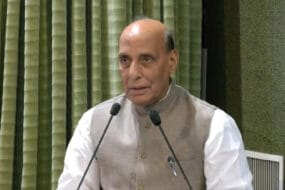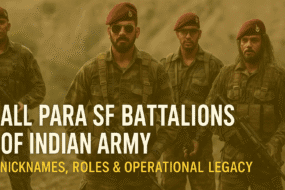IAF Pushes for 40 More Rafale Jets as Indian Navy Nears ₹63,000 Cr Deal
In a move to strengthen India’s aerial combat capabilities, the Indian Air Force (IAF) is preparing to acquire 40 additional Rafale fighter jets from France through a government-to-government (G2G) agreement. This push coincides with the Indian Navy’s upcoming signing of a ₹63,000 crore deal for 26 Rafale-M fighters, expected during the French Defence Minister’s visit to Delhi on April 28 or 29.
Strategic Talks and Fast-Tracked Plans
Sources have revealed that high-level discussions between Indian and French officials have covered both the Rafale expansion and engine partnerships with Safran for India’s helicopter projects. The IAF acquisition would fall under a fast-tracked “MRFA-plus” model, bypassing the long-stalled 114-jet MRFA tender.
This move is seen not merely as an emergency acquisition but as a strategic consolidation around the Rafale ecosystem—leveraging operational familiarity and existing infrastructure to bridge the IAF’s squadron gap.
IAF’s Fighter Shortage: An Urgent Need
Currently, the IAF operates only 31 squadrons—well short of the sanctioned strength of 42.5 squadrons. With legacy aircraft like MiG-21s and Jaguars retiring, the Air Chief Marshal had earlier emphasized the need to induct 35–40 new jets annually to maintain combat readiness.
Though HAL is working on delivering 97 Tejas Mk-1A fighters by 2030, the production timeline and scale have pushed the IAF to look towards additional foreign acquisitions—and Rafale, with its proven performance, tops the list.
Indian Navy’s Rafale-M Deal Ready for Takeoff
On the naval front, India is finalizing a deal for 22 single-seat Rafale-Ms and four twin-seat trainers to operate from aircraft carrier INS Vikrant. Cleared by the Cabinet Committee on Security, deliveries are expected to begin by 2028, completing by 2031.
The Navy deal includes Astra missile integration, full MRO support, and crew training modules—investments that will also support the IAF’s Rafale fleet.
Meanwhile, ten IAF Rafales are undergoing upgrades, including aerial refueling capabilities and enhanced sensors, reinforcing India’s growing dependence on the platform.
Why the Rafale Again?
Battle-tested and equipped with Meteor missiles, SCALP stand-off weapons, and AESA radar, the Rafale offers a significant edge over ageing Indian platforms. It has already proven its capability in conflict zones like Syria, Libya, and Ladakh, making it a trusted frontline asset.
The high commonality (95%) between the IAF’s and Navy’s Rafales ensures shared logistics, training, and maintenance efficiencies, further strengthening its case for fleet-wide standardization.
Strategic Rationale for G2G Route
Rather than wait for the sluggish MRFA competitive process, India is opting for speed and strategic alignment through the G2G route. This model ensures faster deliveries, operational continuity, and deeper industrial collaboration—aligning with India’s Make-in-India vision.
Talks are also underway to localize Rafale assembly, scale up MRO capabilities, and increase technology offsets to build a self-reliant defence ecosystem around the platform.
A Tilt Toward Dassault
While competitors like the F-15EX, Eurofighter Typhoon, and Saab Gripen-E remain contenders in theory, the momentum—political and operational—is clearly in Dassault’s favor. If approved, the IAF’s additional 40 Rafales will bring its total fleet to 76 aircraft, equivalent to four full squadrons.
This would not only partially close the fighter squadron gap but also bolster India’s deterrent posture amid China’s rapid PLAAF modernization and Pakistan’s J-10C acquisitions.
















